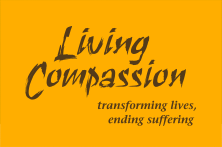Gassho,
There’s an Old Zen Story about the monk who wakes up one morning with snakes crawling all over her body. She, understandably, became immediately hysterical. When those called to her by her wild shrieking attempted to tell her there were in fact no snakes, she became even more upset. She was inconsolable. The head monk called in the local physician who suggested drugs to calm her down. She screamed louder at the thought. Next a therapist was brought in, but unable to communicate at all through the yelling and thrashing, suggested that perhaps the doctor was right. Finally (finally?!) they decided to send for a Zen Master. The master arrived, sat down quietly in a corner of the room and began to meditate. Eventually the monk was drawn into the stillness and slowly calmed enough to tell the master what was happening.
“They’re all over me,” she moaned piteously. “There are hundreds, maybe thousands of them, they’re everywhere. What can I do? Please help me,” she pleaded.
The master nodded thoughtfully and then told the monk, “I will help you. But first I must go to a far city; I will return in two weeks. Until then you must do two things.” “Anything,” cried the monk. “I will do anything.”
“Very good,” said the master. “Until I return you must, first, watch these snakes very, very carefully. Observe them minutely. Note their color, sizes, shapes, textures, patterns, and facial features. See everything there is to see about them and, second, do not mention them to a soul. Say not a word about them to anyone.”
When the master returned two weeks later, the head monk ran through the gate excitedly calling, “The snakes are gone! The monk is cured!”
I had quite a difficult situation arise this week. Nothing like waking up with snakes all over me, but one of those circumstances that can try one’s practice. The temptation, for me anyway, when that sort of thing happens is to talk about it. I’ve heard there’s a culture somewhere that, when there’s a death, assigns “telling the story” to the person closest to the deceased. The individual tells the story over and over until there’s no more emotional charge. Or perhaps until the facts have integrated enough that the person is free simply to grieve and begin to accept. Who knows?
I’ve long suspected that, depending on the situation, telling the story can be more a matter of “adding fuel to the fire” than taking steps to let it go. There can be that little spin, the right choice of words to elicit the desired response. Each telling can add another layer, voices might slip in, there’s a touch of added emotion, some memories surface from similar situations… And, yet, without any outlet it can feel as if the energy, remaining contained, festers.
What is a person to do? Yep, you guessed it—a person can pick up their recorder and have a very helpful talk with the Mentor. The story can come out. The story is heard again and again, if one so chooses. Information, encouragement, clarity, wisdom, compassion can come in from a source with no investment in anything other than the end of suffering.
The result of this choice to turn to the Mentor via the recording and listening was a letting go personal best for me. I highly recommend it. It is such a savings in time, energy, money, and effort. We have “stop, drop, and breathe,” and now to that we can add, “stop, pick up the recorder, breathe, hit record, and talk.” Okay, it’s not as catchy—but it’s equally powerful.
In gassho,
Cheri
Practice Blog
Stay in Touch
Talk about Snakes
